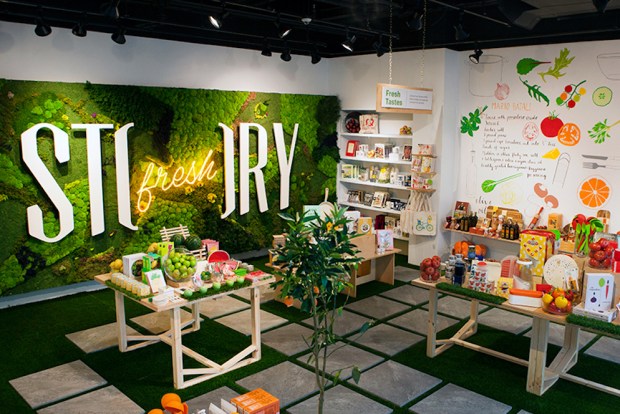Changing Physical Retail’s STORY

Though the level of alarm one feels about the current state of physical retail in the United States can vary some, from mild concern to full-tilt fear of an oncoming apocalypse, there is no denying at this point that outside of a few continuously successful bright spots, brick-and-mortar retail is in a tough spot.
And one likely to get harder as Amazon seems to be constantly increasing its number of Prime Members, more customers each day seem to be converting to online and mobile ordering, and an ever-expanding list of retailers seems to be teetering on the brink of bankruptcy (unless of course they have already fallen right over the edge).
Thinking their way out of the cataclysm, however, has proven to be stubbornly difficult. “Building a better customer experience has become something of a favorite slogan, but it is one that fails to answer a fundamental question: What exactly is a better retail experience? Is it more immersive or more laid back; do customers want lots of attention, or do they need to be free to self direct; is the real route to any consumer’s wallet the price point, or has everyone finally reached sales saturation where they’re looking for something much more ephemeral?
At various points, retailers have rolled out a plethora of potential answers to all of those dilemmas, and while success (and not-successes) abound, no clear-cut answer emerges.
And that Rachel Shechtman, owner and operator of Manhattan’s rotating retail store STORY notes, may well be because consumer experiences are built on and around variety. Customers want all of those things, or none of those things, depending on their mood, time frame, budget and a host of other factors. What physical retail can’t do, and should just give up trying to do, is reach everyone at once with everything. Instead, all of those experiences can take turns.
STORY is a business that is reinvented from scratch every three to eight weeks like a gallery, with a new retail partner designing a new experience, offering up a new point of view and then selling them to consumers. A bit more substantial that the standard pop-up; and thus much more customizable, most recently the “story” on offer at the location was Fresh STORY, a collaboration with Jet.com to promote fresh food.
Because, Shechtman noted in a recent interview, consumers are rejecting part of physical retail but not the genuinely enjoyable communal aspects of it.
“The editorial narrative for Fresh STORY is informed by and inspired by fresh ingredients from Jet.com and merchandise that’s connected to it. And then, we’ve done a ton of events, ranging from a conversation with Mario Batali to a cooking class for kids to a make-your-own bitters class. And I think that’s one of the things that’s probably one of the biggest surprises since launching STORY. There have been many happy accidents and people yearning for a community in a physical world. There are couples who have met at STORY and started dating. There are people who’ve quit jobs because they’ve come to events and they’ve been inspired and motivated. I think the more and more technology isolates us and automates things, the more we want human connection. To me, so much about the future of retail is community and bringing people together.”
Shechtman notes that retail as we know it now is a hundreds of years old business model that is being asked to essentially make a massive U-turn. And that, she notes, isn’t going to happen overnight.
“You’re asking this entire industry to reinvent how it creates value. Yet the system, Wall Street, that determines its value remains unchanged because they’re functioning based on comparables. In other words, they’re looking at comparable sales performance. So if you’re the CEO of one of these large stores and you have a decision to make, are you going to double down and risk something that could prove very fruitful in the future, but right now, it would impact your balance sheet?”
Those tangles and issues are real and much more complicated for massive stores dealing with hundreds or even thousands of locations. Hitting a reset button isn’t easy, and investors have to be along for the ride.
STORY, she said, is a new idea in retail, and there is much retail can learn about the importance of variety in merchandizing, but the search for a silver bullet is likely futile.
“I think, for us, it’s about a narrative and storytelling and how we can learn and how we can connect and how we can be entertained and how we can consume in a new way.”
